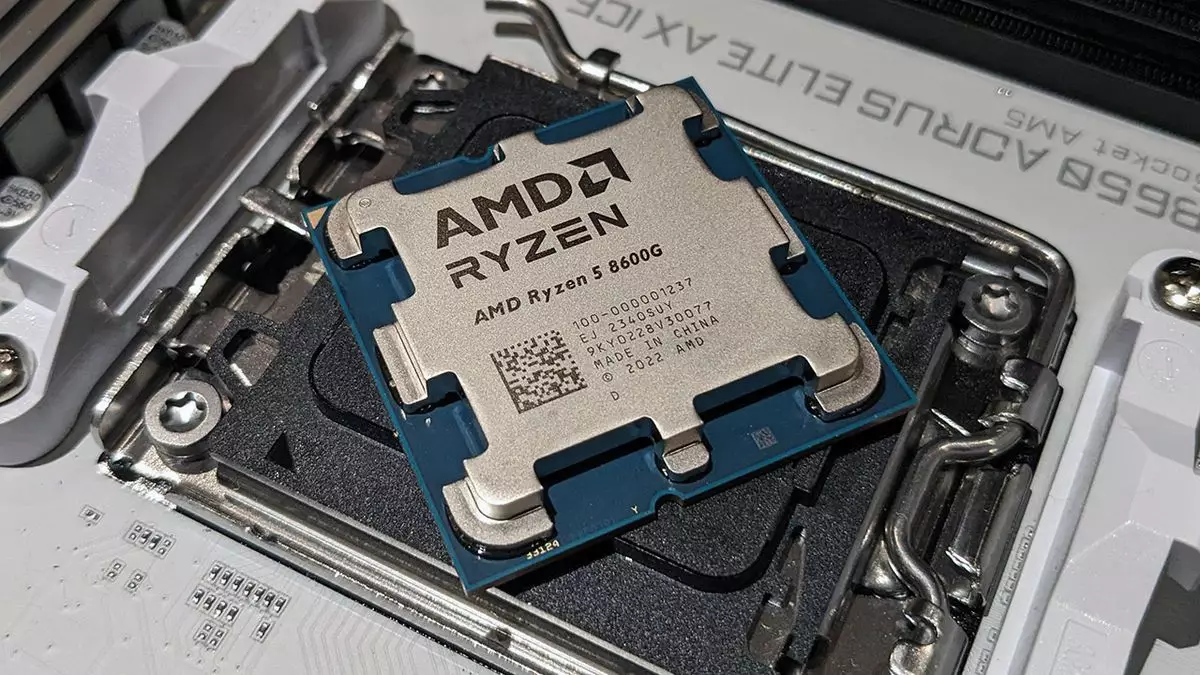The world of component naming schemes has become increasingly complex in recent years, with manufacturers constantly introducing new models and designations that can leave consumers scratching their heads. The recent sighting of the Ryzen Pro 7300G and 7500G chips is a perfect example of this trend, adding to the confusion surrounding AMD’s product lineup.
A recent post on a Chinese discussion forum showcased the AMD Ryzen 3 Pro 7300G and Ryzen 5 Pro 7500G, chips that deviate from the typical naming conventions we have come to expect. These chips, belonging to the 7000G-series, are a departure from the usual “G” SKUs that are found in the 8000-series, such as the Ryzen 7 8700G and Ryzen 5 8600G. It appears that these 7000G-series chips are essentially early versions of the 8500G and 8300G chips that were later rebranded as part of the 8000-series.
AMD’s decision to dedicate the entire desktop 8000-series generation to “G” processors, which are accelerated processing units (APUs) with integrated RDNA 3 graphics, adds a layer of complexity to their product lineup. This move also aligns with the introduction of 8000-series branded mobile processors, which bear a striking resemblance to the 7000-series chips. The introduction of “F” chips, such as the Ryzen 7 8700F and Ryzen 5 8400F, further adds to the convolution of AMD’s naming conventions.
The similarities in naming between CPUs and GPUs within AMD’s lineup, such as the RX 7700 XT and Ryzen 7 7700X, only serve to compound the confusion for consumers. The introduction of the new Ryzen 9000-series chips, marking a generation leap, may hint at a corresponding change in motherboard compatibility, with the expected release of 800-series motherboard chipsets. Despite these updates, the convoluted nature of AMD’s naming scheme remains a point of contention.
In contrast to AMD’s labyrinthine naming conventions, Intel has also faced criticism for its shifting branding strategies. The abandonment of Core 15th Gen naming in favor of Core Ultra 200-series branding reflects Intel’s attempts to streamline its product lineup. However, this transition has not been without its own challenges, leading to confusion among consumers about the hierarchy of Intel’s processors.
The world of CPU and GPU naming conventions is fraught with complexity and confusion, as manufacturers like AMD and Intel continue to introduce new models and designations. The unveiling of the Ryzen Pro 7300G and 7500G chips is just one example of the challenges that consumers face when navigating the ever-changing landscape of hardware. As technology continues to evolve, it remains to be seen whether manufacturers will prioritize clarity and simplicity in their naming conventions, or if the trend towards complexity will persist.


Leave a Reply